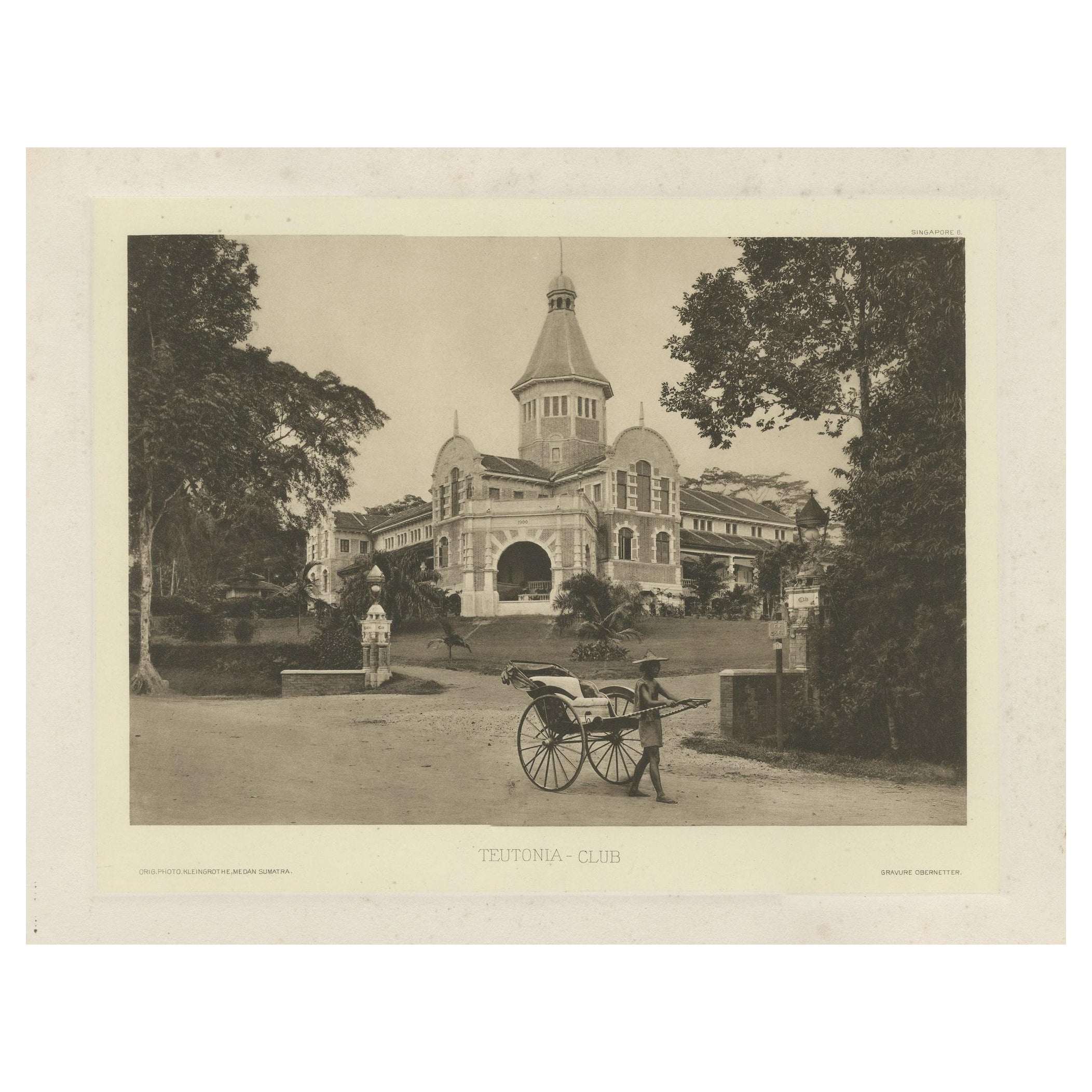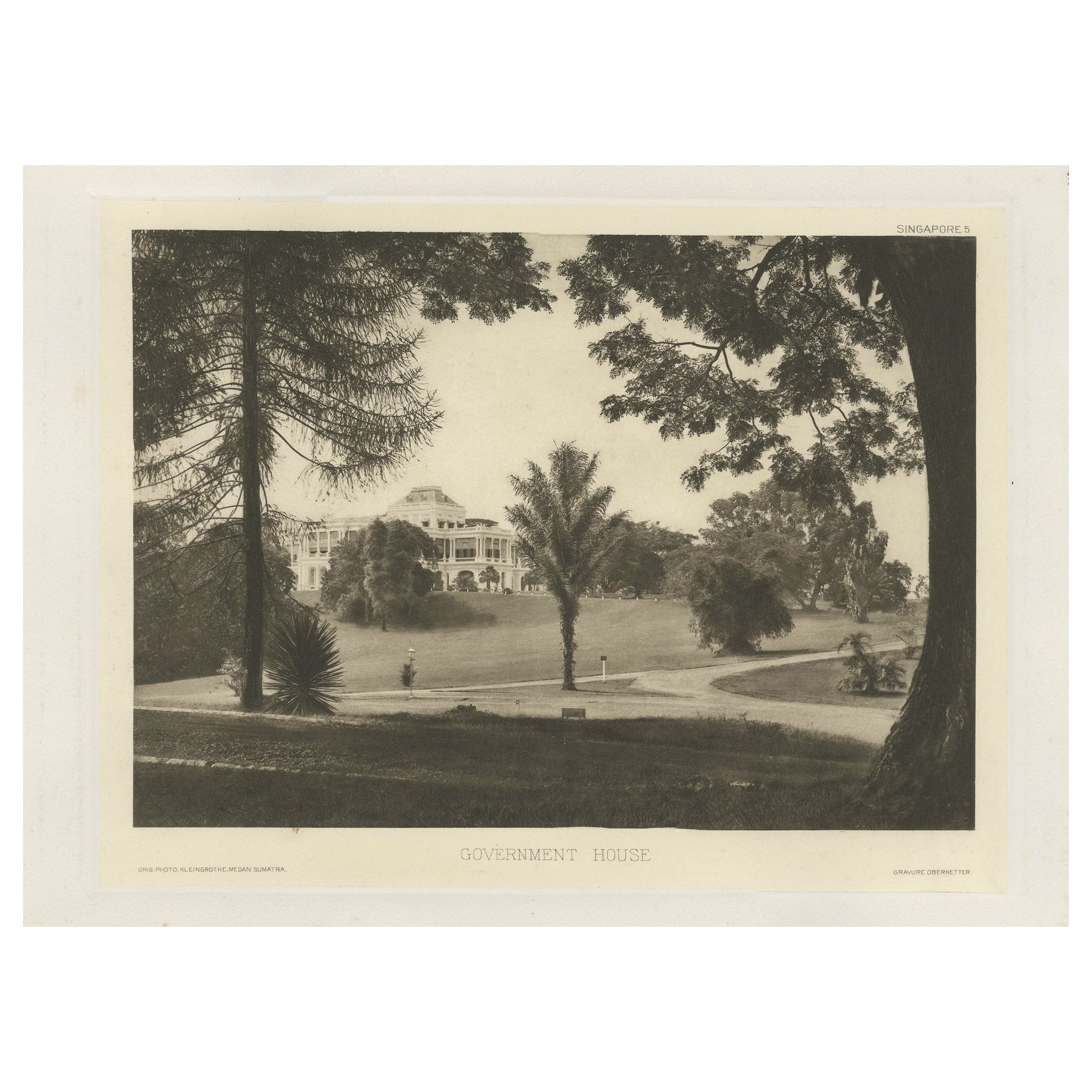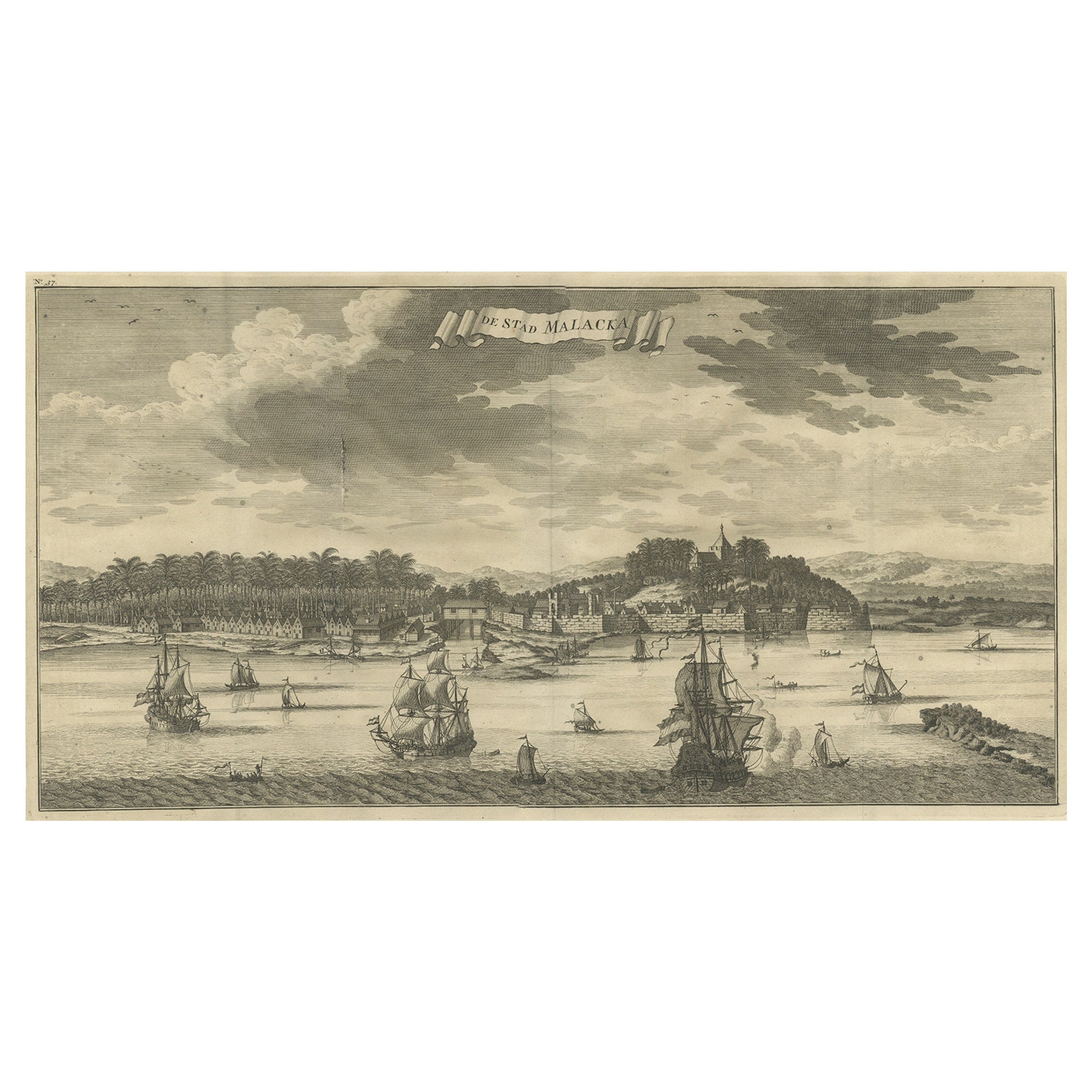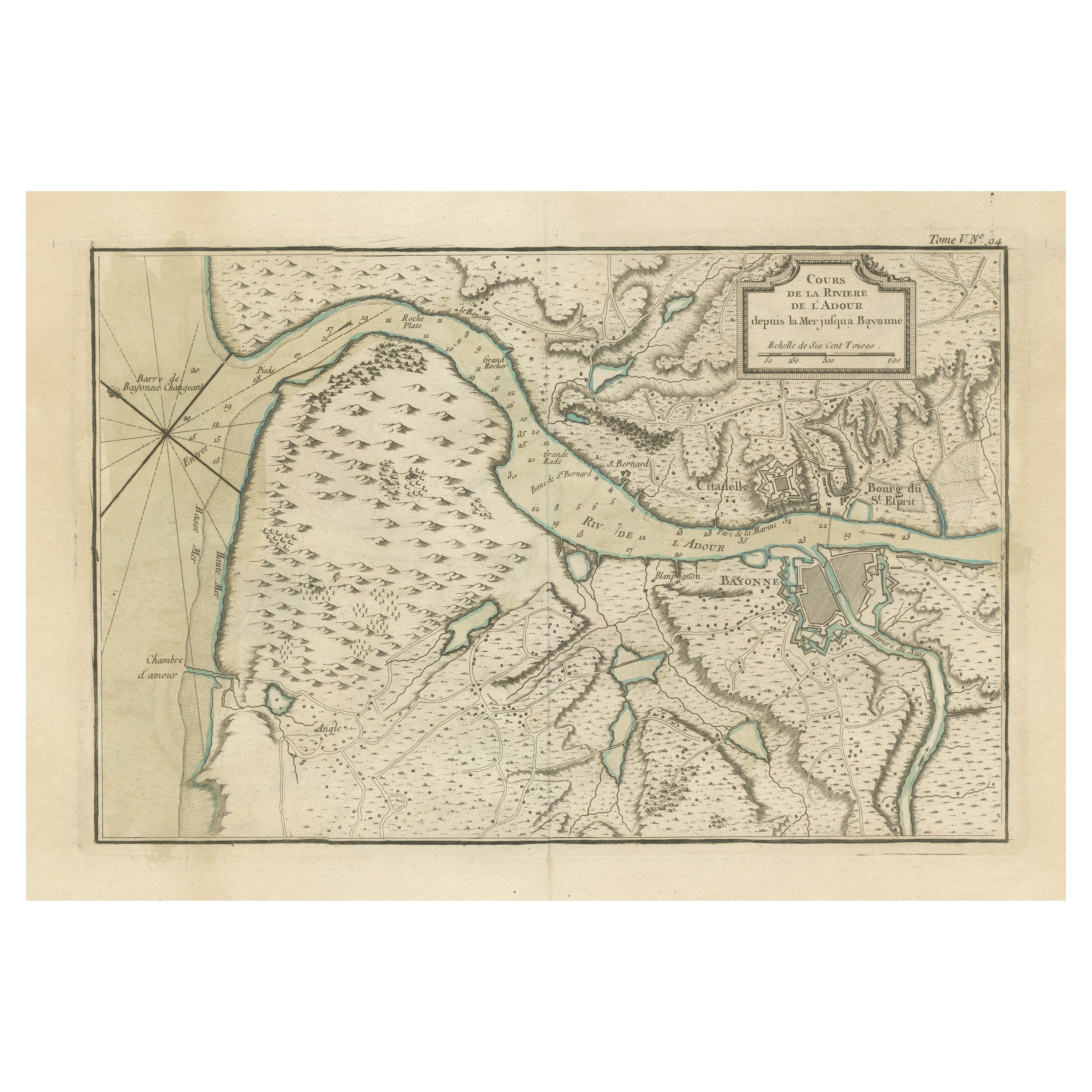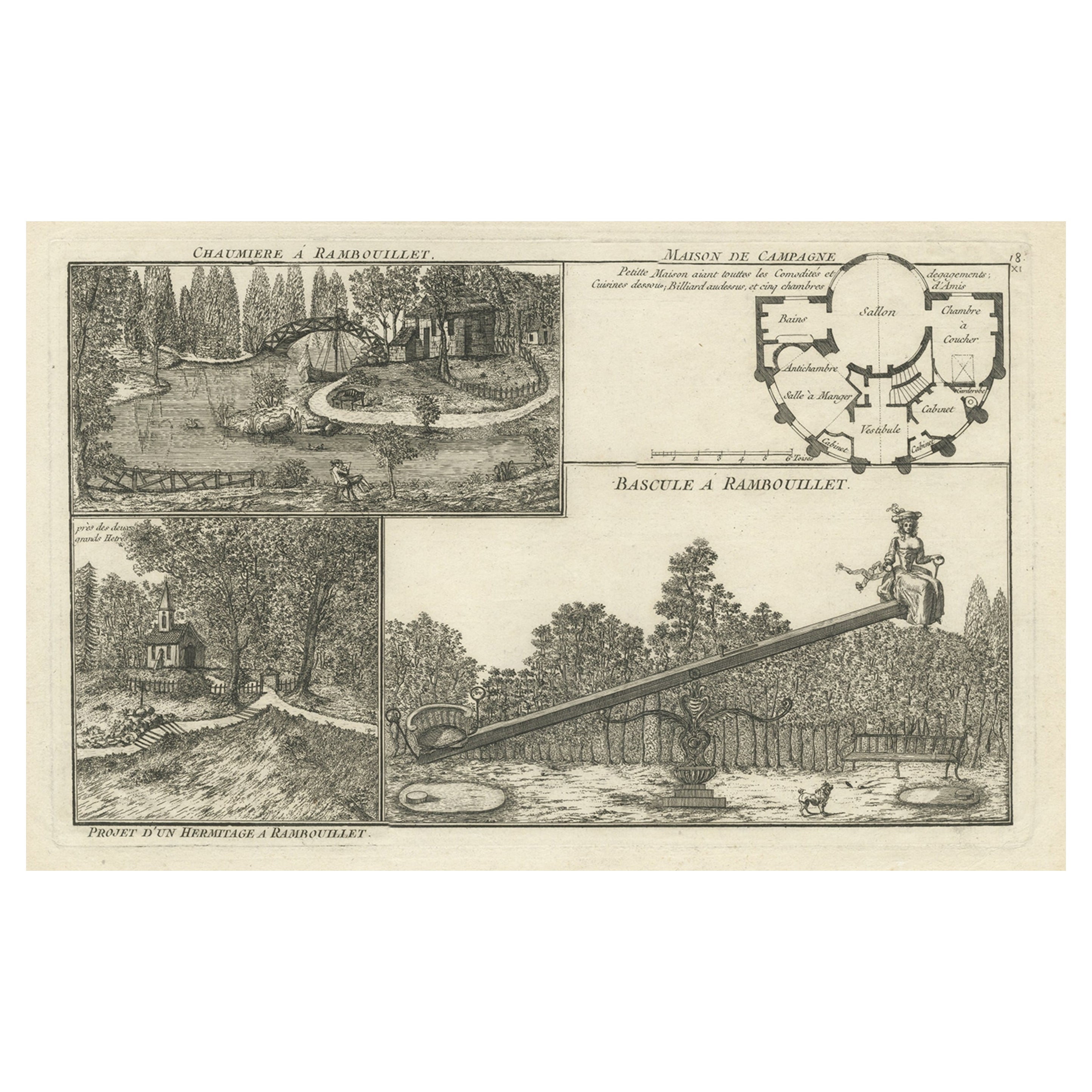Items Similar to Four Rare Heliograph Views of Mining Near Sungei Bessi River in Malaysia, 1907
Want more images or videos?
Request additional images or videos from the seller
1 of 6
Four Rare Heliograph Views of Mining Near Sungei Bessi River in Malaysia, 1907
About the Item
Four views of early Mining operations in Malaysia at the beginning of the 20th century. Published in 1907.
1) A Sand-Lake of Residue (Sungai of Sungei Bessi)
2) Chinese Smelting Works
3) Europ Tin Mine
4) Puddling Machinery
This heliogravures are on one leaf from the extremely rare boxed Malay Peninsula portfolio originally containing 72 leaves in total and made after photographs by Charles J. Kleingrothe.
Charles J. Kleingrothe, (1864–1925), was a German photographer who worked in Singapore in 1889 and had a studio in Medan, Sumatra between 1889 and 1925. In the late 1860s, Kleingrothe worked for G.R. Lambert & Co., a leading photographer of Singapore whose prints had been compiled in a similar though less sumptuous volume years ago. When the plantation economy of Sumatra flourished in the latter half of the 19th century, G.R. Lambert opened a branch of its studios in Medan in 1888, then part of the old Deli Sultanate, for which Kleingrothe was put in charge. In 1891 Kleingrothe partnered with the Swedish photographer H. Stafhell for ten years and photographed the landscapes and architecture as well as portraits. In addition to photographs of Singapore and North Sumatra, Kleingrothe photographed Penang, Malaya for his Malay Peninsula Portfolio. In 1901, the partnership ended and in 1902 Kleingrothe opened a studio on Kesawan Street in Downtown Medan and photographed agricultural subjects including tobacco, coffee, tea, rubber and palm oil cultivation, administration and transport.
Little biographical information has come to light about Charles J. Kleingrothe, whose images of the Dutch East Indies and British Malaya are now highly sought after collector’s items.
When the Medan branch declined and was subsequently wound up during the Great War in 1916, Kleingrothe too seemed to have disappeared without a trace.
Heliogravure, Héliogravure is the oldest procedure for reproducing photographic images. It was first invented in the early 19th century. The process involves two distinct steps. First, in a complex photochemical procedure that creates the intaglio surface, the photographic image is fixed and etched upon a specially prepared copper plate. The finished plate is then placed on a hand-turned press, and the image is printed onto dampened etching paper using special inks. This traditional method of héliogravure is variously called héliogravure au grain or héliogravure à plat. Before receiving the photochemical transfer of the image, the flat copper plate is first carefully dusted with rosin powder; it is then heated, so that the microscopic grains of rosin melt into fine droplets and fuse to the metal. It is this that accounts for héliogravure’s exceptional tonal range, for when the plate is subsequently etched, the acid only reaches the copper through the fine interstices existing between these grains. The transitions from light to dark are thus modulated with extreme precision and subtle nuance. Even when examined under a magnifying glass, a héliogravure betrays no screen pattern, unlike images printed using Industrial methods such as offset, letterpress or rotogravure.
Héliogravure belongs to the same family of intaglio printing techniques as engraving, etching and aquatint. As such, it requires an especially good quality of thick paper, one that can draw out the ink from the furthest recesses of the etched copper. In like manner, the plate embosses the finished prints, for its form is impressed into the dampened paper as they pass together through the rollers. Printed by hand in limited quantities, each héliogravure is considered an original, and its value is accordingly assured.
- Dimensions:Height: 13.78 in (35 cm)Width: 17.72 in (45 cm)Depth: 0 in (0.02 mm)
- Materials and Techniques:
- Period:1900-1909
- Date of Manufacture:1907
- Condition:Wear consistent with age and use. Minor structural damages. The image area is in excellent condition with sharp and clean images of the mining works, making this rare print ideal for framing. The outer border has a tear (bottom), a crease (left side) and some minor browning due to age, but not into image.
- Seller Location:Langweer, NL
- Reference Number:
About the Seller
5.0
Platinum Seller
These expertly vetted sellers are 1stDibs' most experienced sellers and are rated highest by our customers.
Established in 2009
1stDibs seller since 2017
1,947 sales on 1stDibs
Typical response time: <1 hour
- ShippingRetrieving quote...Ships From: Langweer, Netherlands
- Return PolicyA return for this item may be initiated within 14 days of delivery.
More From This SellerView All
- Heliograph of Tin Mining in Tronoh, Perak and Tambun in Sabah, Malaysia, 1907Located in Langweer, NLThree views of the Mining Industry in Malaysia around 1907. 1. Lankshuts at Tronoh, Perak 2. Puddling Machinery, Tambun in Sabah 3. Shaking Machinery at Red Hill This helio...Category
Antique Early 1900s Antiquities
MaterialsPaper
- Rare Heliograph of the Teutonia Club in Colonial Singapore, 1907Located in Langweer, NLTeutonia Club, Singapore. Established in 1856, the club was an elite enclave for the German community in Singapore until it was bought over by three Jewish brothers from the Manasseh...Category
Antique Early 1900s Dutch Prints
MaterialsPaper
- Rare Heliograph of the Government House in Colonial Singapore, 1907Located in Langweer, NLOriginal Image of the Government House, Singapore, of over 100 years old. Very rare. The Istana (English: The Palace) is nowadays the official resi...Category
Antique Early 1900s Dutch Prints
MaterialsPaper
- Large Panoramic View of Eisenerz, an Old Mining Town in Styria, Austria, c.1650Located in Langweer, NLDescription: Antique print titled 'Der weyt berümpte Marckt und Bergwerck Eysenärtz im Hertzogtum Steyer'. Large panoramic view of Eisenerz, an old mining town in the Austrian st...Category
Antique 1650s Maps
MaterialsPaper
- Antique Panoramic View of the Town of Malacca, Malaysia, 1726Located in Langweer, NLAntique print Malaysia titled 'De Stad Malacka'. Decorative panoramic view of the town of Malacca with European vessels in the foreground. The old C...Category
Antique 1720s Maps
MaterialsPaper
- Antique Map of the Adour River, Near Bayonne, FranceLocated in Langweer, NLAntique map titled 'Cours de la riviere de l'Adour depuis la mer jusqua Bayonne'. Original old map of the Adour river, near Bayonne, France. This map originates from 'Le Petit Atlas ...Category
Antique Mid-18th Century Maps
MaterialsPaper
You May Also Like
- Original "1902-1907 Officers of the Staff Corps" by C. Ogden, 1908Located in Colorado Springs, CO1908 "1902-1907 Officers of the Staff Corps & Departments, General Staff and Chaplain in Full Dress" Chromolithograph by C. Ogden This colorful lithograph by H. A. Ogden was publish...Category
Antique Early 1900s American Prints
MaterialsPaper
- Vintage "View of the Center of Paris Taken from the Air" Lithograph MapLocated in San Diego, CAA very stylish "View of the Center of Paris Taken from the Air" lithograph map published by the Paris Ministry of Tourism, circa early 1950s. The piece measures 27" x 43" and shows...Category
20th Century French Mid-Century Modern Prints
MaterialsPaper
- Catalogue of Engraved Views, Plans, Etc., Of New York City, 1st EdLocated in valatie, NYA catalogue of engraved views, plans, etc., Of New York City, (The Collection of Percy R. Pyne II). Privately Printed by The De Vinne Press, New York, 1912. Limited to 100 copies. Gr...Category
Early 20th Century American Books
MaterialsPaper
- N.E. View of the United States Capitol, Washington, DC Antique Proof Print 1858Located in Colorado Springs, COThis engraved print shows a view of the United States Capitol Building, in Washington, D.C. The print depicts the neoclassical building from the northeast orientation, with a bustling street scene in front. The steel engraving is a proof printing, drawn and engraved by Henry Sartain and published in 1858. Plans began in May 1854 to build a new cast-iron dome for the United States Capitol. The then-architect of the Capitol Thomas Walter and his team were sold on the aesthetics of a new dome, as well as the utility of a fire-proof one. A year later, on March 3, 1855, President Franklin Pierce...Category
Antique 1850s American Prints
MaterialsPaper
- City View of Nuremberg, Germany: An 18th Century Hand-Colored Map by M. SeutterBy Matthew SeutterLocated in Alamo, CAAn 18th century hand-colored city view of Nuremburg, Germany entitled "Geometrischer Grundris der des Heiligen Römischen Reichs Freyen Stadt Nürnberg" by Matthaus Seutter from his "A...Category
Antique Mid-18th Century German Maps
MaterialsPaper
- Extremely Rare Copy of the Venezuelan Declaration of Independance, 1811Located in Amsterdam, NLExtremely rare copy of the Venezuelan Declaration of Independance 'Declaracion de Independencia de las Siete Provincias Unidas de Venezuela en Congreso de 5 de Julio de 1811' By Lorenzo Lüthy (c. 1811-1877), printed in Philadelphia, Peter S. Duval, 1841. Lithograph on laid paper, mounted in passepartout, H. 84 x W. 64.5 cm (with mount H. 96,5 x W. 77 cm.) Large and extremely rare lithographed broadside Declaration of Independence of Venezuela by American immigrant...Category
Antique Early 19th Century Venezuelan Prints
MaterialsPaper
Recently Viewed
View AllMore Ways To Browse
Dark Antique Copper
Tea Screen
Rare Antique Tins
Chinese Wall Screens
Palm Leaf Wall
19th Swedish Box
Copper Made Sweden
Tea Tin Antique
Antique Tea Tins
Dutch Industrial Light
Copper Made In Sweden
Antique Metal Oil Cans
Antique Metal Oil Can
Coffee Press
Chinese Screen 4
Antique Powder Box Powder Boxes
Antique Powder Boxes
Antique Powder Box
